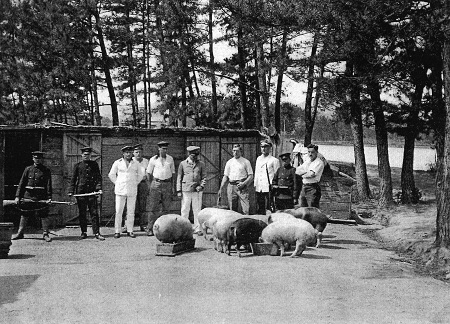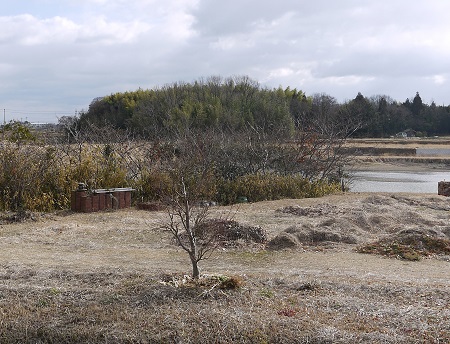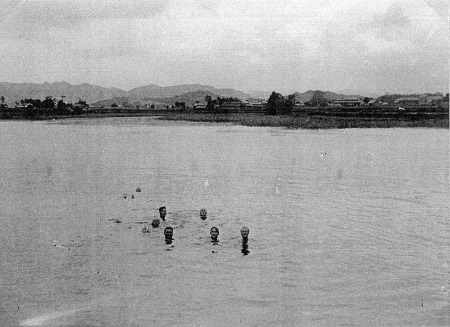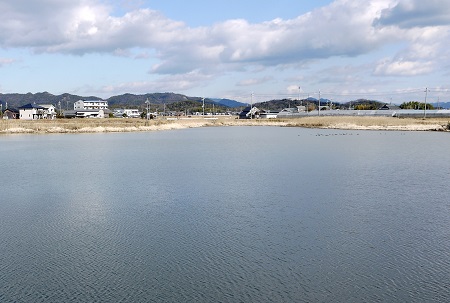本文
Raising pigs
In April 1918, prisoners were given permission to raise pigs. Kersten, who was assigned this task, left detailed descriptions in his diary about how they were allowed to raise pigs and the methods that they used.
“We were given permission to raise pigs in mid-April 1918. This is because a meal service caterer had built a new pigsty at his home. He allowed us to use his old pigsty, which was in the dam of two dammed ponds in the woods about 800 meters away from the camp. The pigsty was fully packed if 15 pigs were placed in it. But we immediaTely extended it by one-third by using beer box boards. To raise the pigs, we needed 120 yen, which was provided by Siemens as funds for tackling infectious diseases. Pigs should always be sold to the camp to serve food for us and the funds were likely to be secured. We started raising pigs from a female pig allotted for breeding and two pigs for eating. When we found a sick baby pig, we secretly took it to my barracks, removed the boards from the bed and hid the baby pig in the space under the bed.
In this way, we started raising the baby pig and certainly resulted in saving his life. This is because we were in the livestock shed from ? am to 11:00 am and from 1:00 pm to 6:00 pm in summer and from 8:00 am to 11:00 am and from 1:00 pm to 5:00 pm in winter, and we would be unable to take care of the pig in the pigsty. After our allocation of bread almost doubled, there was much leftover food from the meals of 60 prisoners. The baby pig gorged himself on the food and “rich” prisoners gave him cafeteria milk. “Muttsu” was given neatly picked litter every day, and he became healthy and strong in six weeks and entered the pigsty. Muttsu was as tame and obedient as a dog; he came to us when called and often felt free to run around. It was farmers and two butchers rather than a pig breeder that played a role in taking care of the pig. In August 1918, the female pig for breeding gave birth to seven babies. The camp president allowed us to use two unused stables, one of which we used when the female pig was ready to give birth. The mother and baby pigs were raised in the best conditions and the babies grew to be strong.
At around the same time, two butchers bought pigs from the meal service caterer and gained permission to slaughter them in the camp and make sausages to be sold in the camp. I was assigned the task of taking care of the pigs. This means that there was now two people in charge of taking care of the pigs. But we could bring up to six helpers for work that piled up. We had to report the number of helpers by 30 minutes before our departure. After that, we gained documented permission from the authorities and carried forage to the pigsty by handcart under the scrutiny of two or three sentinels and one or two police officers. Because we managed to save money on considerable forage expenses by using the leftover bread, we could sometimes pack the pigsty with 24 animals, including seven baby pigs.”
(From Kersten’s Diary)

Photo: The pig-raising grounds (courtesy of Mr. Dieter Linke)

Photo: The current condition of what used to be the pig-raising grounds (Beppuhigashi Town)
Kersten and other prisoners went to the pig-raising grounds outside the camp to take care of the pigs even under the scrutiny of guardsmen and police officers. The prisoners themselves processed them into edible meat and made sausages in the camp. A field survey revealed that the pig-raising grounds was located on the bank of Hanjonakaike Pond (Beppuhigashi Town).
In addition, prisoners could enjoy swimming in Ueike Pond just north of this pond, although they were prohibited from doing so at that time.
“On a hot day, we were seized with the impulse to go bathing and swimming, but we were firmly prohibited from doing so by the commander because there was no death compensation. When the two of us in charge of raising pigs quarreled in a dam 3 to 3.5 meters wide, someone was pushed with the water behind him, and fell into a spot 5 meters deep at the edge of the water gate. When he did not come back up to the surface, another prisoner jumped into the water. The two floated back to the surface at a spot 20 to 25 meters away. The watchmen were surprised, but then they laughed and wanted to see it again. We declined their request, saying that we were firmly prohibited from swimming. But they answered that they would keep an eye on us so that we would not be caught. This is how we were able to swim almost every day.”
(From Kersten’s Diary)
The pond where the prisoners went swimming was Hanjoueike Pond, which was near the pig-raising grounds. Photographs left by Hangstein show how they enjoyed swimming there.

Photo: Prisoners swimming (courtesy of Mr. Dieter Linke)

Photo: The current Hanjoueike Pond (Takaoka, Kato City)









